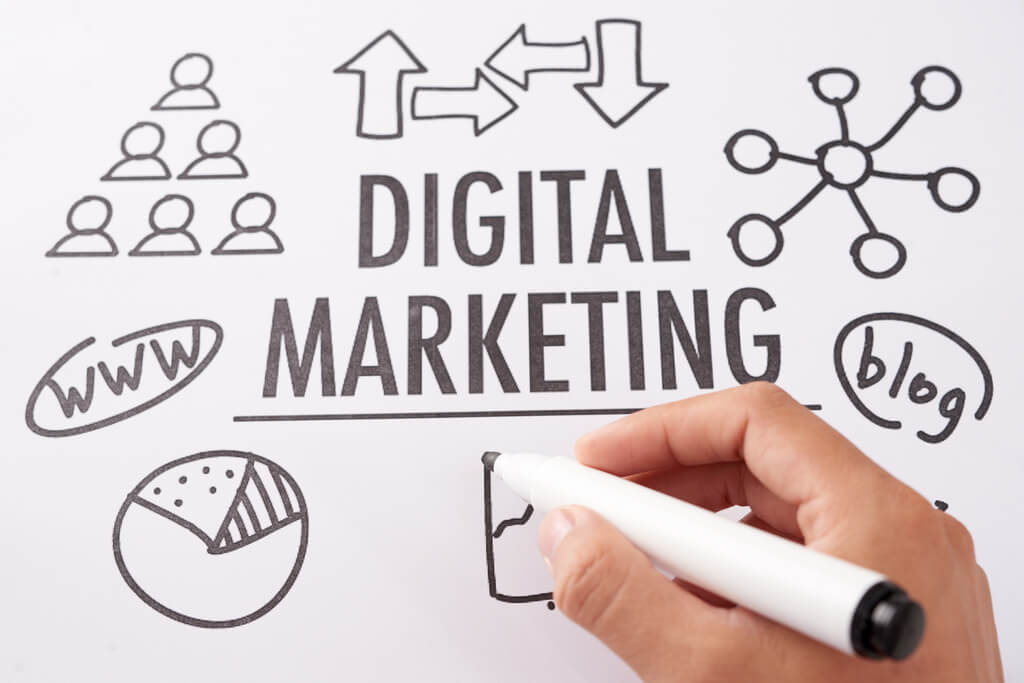
Digital marketing (DM) is an umbrella term for a variety of online inbound and outbound lead generation strategies. However, it does not include any tactics used by sales experts, such as cold calls or email outreach.
Lead generation refers to getting more leads for your business. These are qualified prospects which have shown a real interest in what you’re selling (be it a product or service).
Maybe they submitted a contact form, or filled out a survey, or downloaded an ebook, or anything else.
So, in the broader sense, digital marketing is a blend of techniques to get more leads. Thing is, you do that without ever interacting with your prospects face-to-face or via a video call. What interaction does exist happens through social media comments, email newsletters, the like.
Once a prospect becomes a lead, they move downwards in your marketing funnel (towards completing a purchase).
In many ways, digital marketing means engaging your audience in meaningful ways. Convincing them that your brand is worthy of their trust; that you are able to constantly deliver quality.
In order to do that, you have to reach prospects the right way, at the right time. You can’t flood your website with purchase banners and expect them to work. Some of your leads simply won’t be ready yet to be approached with that kind of messaging.
That’s the whole point of the marketing funnel: creating bespoke strategies for each stage of the process. All of your leads, regardless of how they’re positioned towards your brand right now, must receive relevant information.
At Wesrom, we’re experienced at delivering structured and consistent digital marketing services. Whenever you’re ready to elevate your business, just get in touch with us.
Table of Contents
- What is Digital Marketing?
- What’s The Core of Digital Marketing?
- What Makes Digital Marketing Great?
- The Main Benefits (7) of Digital Marketing
- Inbound Marketing vs. Digital Marketing
- B2B Digital Marketing vs. B2C Digital Marketing
- 9 Digital Marketing Strategies
- 5 Digital Marketing Roles
- Digital Marketing Steps
- Redefine Your Company’s DM
What is Digital Marketing?
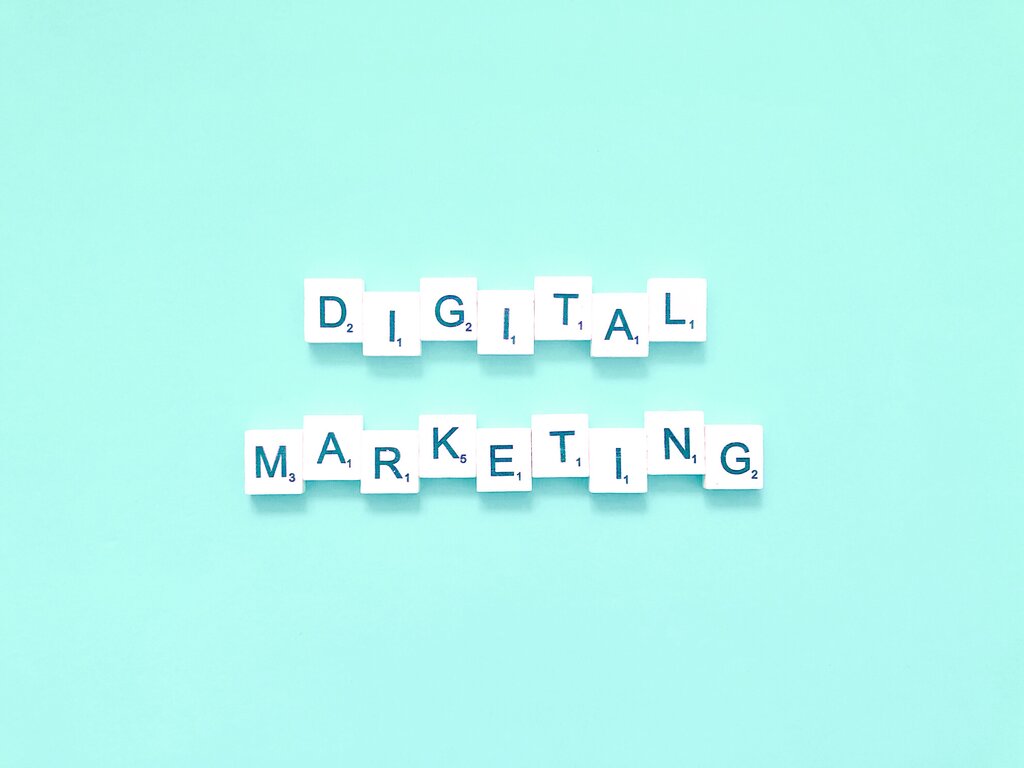
Digital marketing is all of the marketing actions you’re taking online to eventually get more customers or clients. In order to achieve that goal, DM uses a variety of channels and approaches.
Outbound marketing strategies have traditionally been more popular (Pay-per-Click ads, social media advertising, email marketing). But, in recent years, inbound methods (SEO, organic social media, content marketing) have gained a lot of traffic.
Still, as a baseline, remember that digital marketing means doing both. Any channel can be very successful, as long as you’re using it right and your audience is actively engaged in it.
For example, the auto glass replacement market is very competitive in Arizona, USA. You would definitely generate leads with Google Ads, but they would start racking up a significant cost fast. Add to that that not all leads will actually convert to customers, and you might not turn a profit.
So, in that specific case, it’s a great idea to supplement your PPC with SEO and content. If done right, you’ll also get some (or a lot of) “free” leads, via organic ranking.
In other industries, you might get away with only 1 marketing channel. It’s case-by-case work, and trying to force a one-size-fits-all approach is always going to fail.
What’s The Core of Digital Marketing?
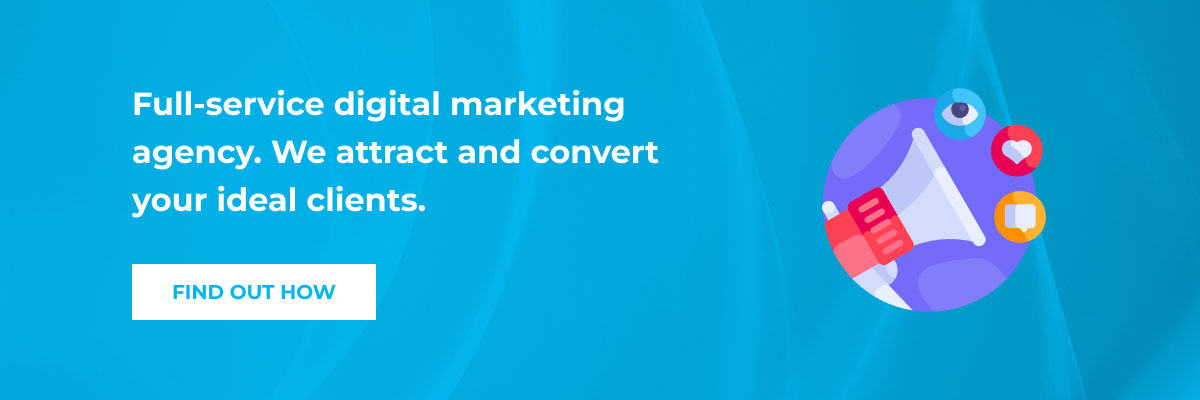
While it’s incorrect to think that one DM practice is completely above the others, there are a few guidelines which you should respect:
- You need a website – there’s no going around it. DM promotes websites most of the time.
- You probably need social media – this can depend on what you’re doing; however, building more user engagement on social media is a great idea.
- Some practices are more expensive – SEO will always be cheaper than PPC, but PPC brings results faster.
Additionally, you should build digital marketing strategies around your business’s present needs. Well-established companies will push their offers more, but you might need solid brand awareness campaigns first.
Besides, think of it this way: even worldwide enterprises such as Coca Cola, Amazon, Apple, Sony, Microsoft and many others still do brand awareness as well. There are always new prospects to reach, and new leads to convert.
Above all, you have to think about what your target audience would want from you. It’s clear that you’re after a profit; that’s why you’re in business. But, what are you offering to them? Is it in demand?
If yes, then do market research. Find the best channels for your case. Maybe a social media presence is the key. Or a well thought-out ad strategy which targets prospects and leads in different stages of the marketing funnel.
Maybe you’re doing great SEO work and drawing in website users, but they’re leaving before actually converting into leads. A remarketing campaign could solve that.
Similarly, content is king now. Prospects want to learn and to educate themselves. Provide that information and show that you’re a figure of authority in the market. What you create on your blog can then be shared on social media, or used in email marketing newsletters.
Multi-channel DM approaches are often best.
What Makes Digital Marketing Great?

The traditional offline methods have very strict limitations. The audience you can reach with them are more constrictive (unless you have a huge budget at your disposal).
Most people in more developed countries are going to have internet access. By simply investing into SEO or PPC alone, you have a chance to reach them. No additional production costs of flyers, or building-sized banners, or personnel to do the groundwork.
Moreover, digital marketing is also more targeted. Where traditional marketing is mostly just outbound shots in the dark nowadays, your online leads are likelier to convert.
You can make a study around when specific target groups might watch TV, sure. But, do you have the budget to roll out the commercials at peak hours? Furthermore, are you sure that all of your target group will be in front of the screen at that time? The real answer is “no”.
However, only truly interested prospects are going to interact with your digital marketing. Someone who clicks an ad is already a lead. They want that product or service.
Someone who reads your blog post clearly has an interest in the topic, so the topic should be linked to what you’re selling.
Overall really, digital marketing is better for both sides. More relevancy, fewer costs, better and faster results. Of course, if you have the resources, then you should still invest in offline marketing too. There’s a reason why football fields are plastered with sponsor logos.
What is Digital Marketing? The Main Benefits (7)
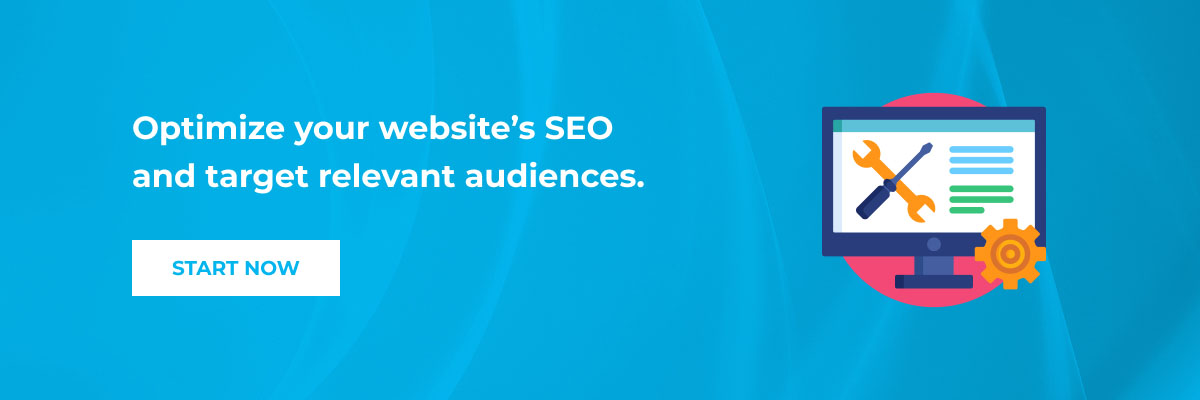
Treat all the information below as a direct comparison to traditional/offline marketing.
Similarly, they’re reasons for which you should invest in digital marketing, and not just hope that customers will find you by chance.
- Less expenditure – when compared with traditional marketing (explained above).
- Better targeting – with the right digital marketing services, you’ll only reach prospects with a higher chance to convert into leads.
- Fast analytics – there are a number of tools which you can use to measure your KPIs in real-time + historical data. The most popular one is Google Analytics.
- Accessible to SMBs – digital marketing isn’t reserved to enterprises. In fact, it gives you the opportunity to challenge the spot of big businesses.
- User engagement – every prospect and lead can be served what they want; either informational content, or transactional content. It is much simpler to serve the needs of your entire audience in planned steps and stages.
- Measurable traffic quality – thanks to the availability of analytics, you can monitor what’s bringing you leads and sales. If your traffic and conversions are highly disproportionate, then the quality of that traffic is subpar. Or, your CRO (conversion rate optimization) needs some work. At the same time, you can also easily see which channels are performing better.
- Simple adaptability – one of your strategies isn’t working? Change it! At worst, you’ll need some new collateral and training courses.
Let’s also get into the details a bit:
Less Expenditure

Digital marketing reaches a wider and more targeted audience without increasing costs. For example, there’s no overhead cost (such as TV commercials, magazine ads, flyers, banners, etc). This also directly translates to more relevancy.
You see, the traditional marketing methods listed above are outbound strategies which you have little control over. You put your product or service in front of customers, and hope they’ll react.
Instead, digital marketing uses outbound tactics that are laser-targeted. With Google Ads alone, you can create campaigns built around specific keywords. Only prospects searching for those topics will even see your ads.
What’s more, digital marketing also switches the approach to inbound lead generation through other channels. SEO-friendly web pages will only show up to queries that match their keywords. Content marketing is carefully directed only to parties with a genuine interest.
You can (and should) also include a Call-to-Action (CTA) on your web pages that draw in cold prospects. Something like downloading a guide in exchange for a newsletter subscription.
Then, you send your new leads regular emails that gradually up their focus on purchase. And there you go, even more “free” marketing (you’d still need an email marketing bulk service provider).
Better Targeting
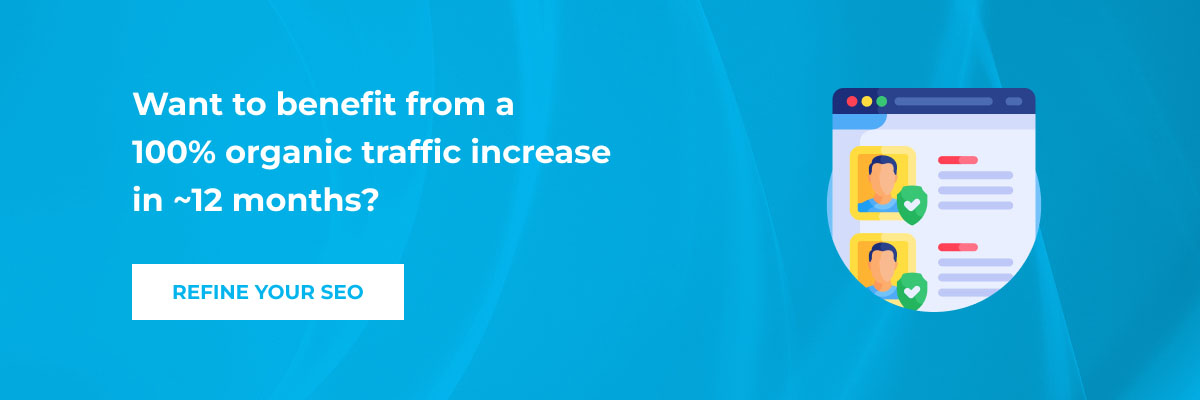
You don’t have to understand demographics in-depth with digital marketing. Instead, you just have to grasp the concept of “user intent”. In other words, what do most people expect to find when searching for specific keywords?
That’s the “secret” to getting your company ahead of the competition. For example, you could be getting a lot of traffic to your website from organic searches such as “the best sales advice”. However, you notice that the average time on page is about 15 seconds, from 100 users.
It might be because you were trying to sell your sales coaching services on that page, instead of servicing the user intent. The professional way to do it would be a keyword research with SEO tools, but even in their absence, look at the query.
Combine that data with the low average time on page, and the answer is simple: those prospects wanted a page that actually taught them something there and then.
Digital marketing lets you solve your audience’s needs faster and better. You are dealing with less sub-groups and buyer personas. What really matters is understanding why users are reaching your platforms, and what to give them so that they convert to leads.
Of course, with some paid ads tools, you can also go deeper into targeting based on age, location, behaviors, interests, and so on.
If all of that sounds a bit complicated, it’s because it is! Don’t worry though, as we’re here to make your life simpler. Just get in touch with us and forget about optimizing your digital marketing. You’ll only have to focus on closing deals or growing your business.
Fast Analytics

Without digital marketing, it’s hard to have a comprehensive view on your metrics. There’s virtually no way to assess how many people saw a commercial. A building banner might be huge, but how many people are actually looking at it instead of just passing by?
You might see spikes in sales, but all correlation would be simply theoretical.
On the other hand, DM bridges the gap between cause and effect. The entire user journey is available with a few clicks.
Ad impressions, clicks, and time on page. Website entry pages, average session duration and pages per session. You could also create custom tracking events that trigger when a specific button is clicked, or if users scroll to the bottom of the page (or maybe just 30% of the page).
Another added bonus is that you can calculate ROI correctly. Digital marketing analytics showcase at what point users took action, what action it was, and through which channel they came to your platform.
Accessible to SMBs
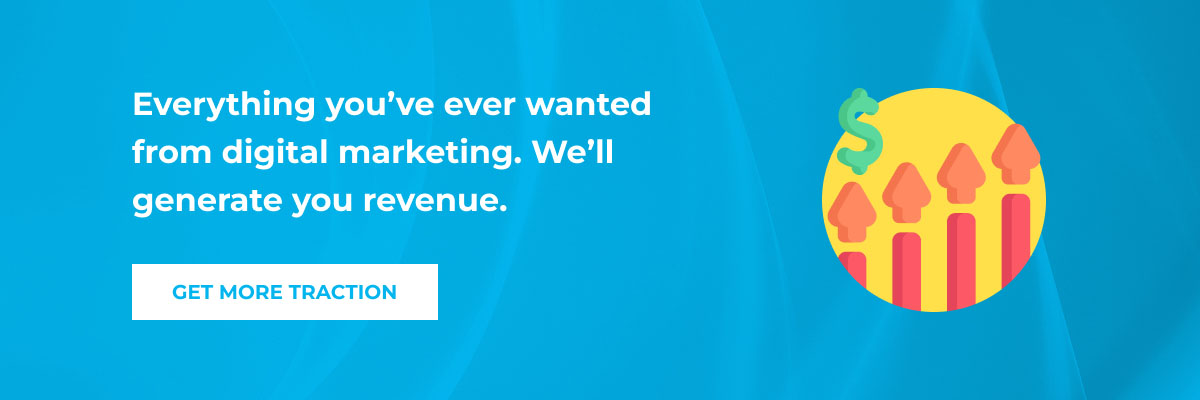
Most industries already have their big players. Various enterprises and organizations with much bigger budgets than SMBs. If you’ve just started looking at how you can get your foot in the door, we understand if you find it daunting.
Here’s the thing though: it doesn’t have to be!
As long as what you’re selling is qualitative and serves an existing demand, DM can fill in the gaps. There’s no need for millions of dollars or nationwide campaigns. You have all the chances you need in the digital medium to outperform the competition.
For example, SEO alone can bring you palpable results in about 6 months. You wouldn’t be on the same foot as brands that have been going at it for 10+ years, but you’d already be established.
Like we’ve mentioned above, digital marketing is one of the greatest tools to get in front of prospects fast and efficiently. Target more long-tail keywords on your website, bid on cheaper keywords in PPC, create desirable content that’s being searched for.
All of these options and more give SMBs the tools that they need to stand out as newcomers in their markets.
User Engagement

Building and retaining an audience is crucial for digital marketing. You have to plan out a standard buyer’s journey, and push relevant messaging throughout. This is what’s going to keep pushing leads further and further down the marketing funnel.
DM works great because it allows you to cover all points between first contact and purchase. For example, new users could be drowned in via brand awareness efforts on social media.
Eventually, with consistent and relevant enough messaging, users will start engaging with your posts more. Liking, commenting, sharing, viewing your company profile. Then, you could start remarketing campaigns targeted specifically on users who were on your profile.
Naturally, the message would be different. They already know who you are and what you’re doing. In fact, they’ve shown their interest through concrete actions. Now’s the time to start building an idea in the back of their heads that the product/service might just be for them.
Those ads would lead users to your website. If they purchase, great! Job done. If not, you can re-target them in another way. Move to ads which would be completely structured around purchase.
They know who you are, what you’re doing, what you’re selling, and they’ve shown interest! It makes sense that now’s the time to keep “pressuring” them into becoming a customer.
Quality leads don’t have to convert in the early stages. It’s a gradual process of give-and-take where it’s your responsibility to give them reasons to trust you.
Measurable Traffic Quality
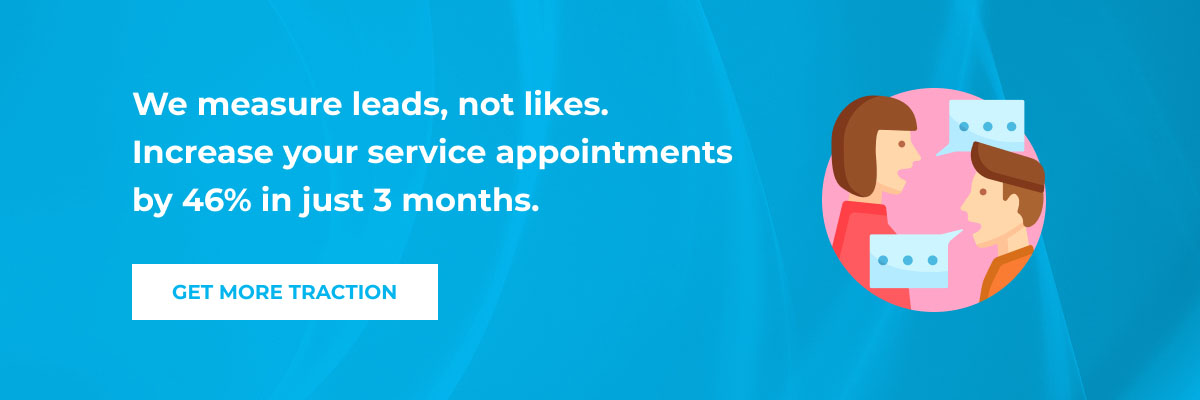
With digital marketing, you have instant access to all of your important metrics. Regardless of your channel of choice (although mixing multiple is best), you have an option of tracking user activity.
- For websites, use Google Analytics.
- Starting out with search results ads or display ads? Go for Google Ads. You can also connect it directly with G. Analytics, and have multiple reports in the same user interface.
- Social media platforms (like Facebook, LinkedIn, Twitter, etc) have their own tools readily available.
- You can also use Google Search Console to analyze which search queries result in clicks, along with other very helpful technical SEO features.
Usually, the metrics you’ll be looking for are impressions, clicks and time on page.
Those 3 are crucial KPIs which tell you if what you’re doing is working or not. For example, a search ad with a lot of impressions but few clicks could have UX problems. It’s being displayed (hence the impressions), but few clicks might mean the headlines are unconvincing.
Or, your targeting is wrong. You went wide, so you get impressions, but those prospects aren’t actually interested in what you’re selling.
Digital marketing gives you all of these insights on the fly and at a moment’s notice, letting you optimize freely. What’s more, it’s the same concept regardless of the channel you’re applying it to.
The DM attribution model

It’s important to carefully analyze all of your important metrics. In other words, if you’re going over your SEO data, make sure you’re taking a comprehensive approach.
For example, both service pages and blog posts have SEO optimization, but it’s different.
One is for transactional searches, while the other is for informational searches. Ranking criteria are going to differ quite wildly between them. If one of them is performing well, it doesn’t mean that the other is doing fine too.
Moreover, not only is DM trackable, but also leads directly to conversions. You can add contact forms or lead magnets straight on your pages, and correlate traffic metrics with conversion metrics.
In this way, in digital marketing, we speak of a concept named “attribution modeling”. Attribution modeling is all about tracing back sales.
Where was the digital touchpoint of a customer with your business? A keyword search on Google? A display ad on YouTube? An organic post on social media? Figure that out, and you’ll know which of your channels are more valuable.
Consequently, you’ll also know where your marketing strategy isn’t performing that well. Use the statistical data to improve and refine.
One case where this is especially helpful is when you’re selling services. Normally, your digital marketing team is making sure that prospects will ultimately become leads. However, it’s then up to your sales team to nurture, grow, and close that deal.
In reality though, there’s often miscommunication involved. Leads might be in the pipeline, but they aren’t getting closed. This could mean 3 things:
- The customer journey is too abrupt.
- The quality of the leads is not good.
- Your sales team needs more training.
DM analytics give you a holistic view on the situation.
Simple Adaptability
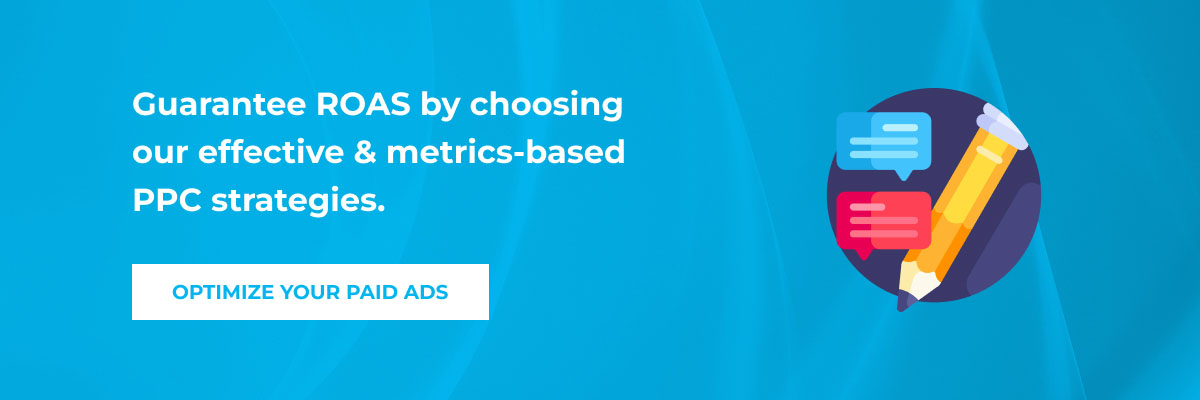
Digital marketing strategies and traditional marketing strategies can each have lengthy planning phases. This is a good thing though. It means that your staff are trying to account for a lot of possibilities and scenarios.
Because of the substantial effort that’s involved though, strategies usually don’t change. You do what’s planned, and then wait to judge the results. Now, things could turn out as expected, or not.
The number of reasons why the final result was different can be so varied that it’s not even worth getting into. Expectations, assumptions, capabilities, predictions, resources, people quitting mid-way, etc, etc.
What’s important is that there’s been a change. And when change happens, digital marketing is way faster to adapt to it. Instead of going 180 with your strategy, maybe a short swivel is enough.
In DM, you never have to just start over from the beginning. You’re committing a lot less than you would with offline. No physical collateral, no unbreakable third-party deals, no contracts for a huge billboard (that’s not working) that’s costing you thousands of dollars.
For example, say your plan revolved around a content strategy with pillar posts and supporting articles. But, for SEO reasons, it’s not working. Your competitor’s domain authorities are just too high. As a new platform, you won’t show up consistently in SERPS before you go out of business.
So, you decide to support those articles with some valuable backlink building. Or you make sponsored posts on social media that direct people to them.
The costs are acceptable, and because of the quality of your articles, you get new leads. The leads get into your email marketing pipeline, and eventually convert down the line.
Just like that, you’ve adapted to market conditions thanks to digital marketing.
Inbound Marketing vs. Digital Marketing

As we’ve said above, digital marketing refers to many online practices that aim to bring you more leads (without sales-specific ones). This includes inbound marketing, which is essentially a set of practices focused on indirectly drawing users to your platform.
However, many people still make the confusion even today. Inbound marketing is more of a tactic built around digital marketing strategies. It’s a collection of methods to attract & engage users.
On the other end, you have outbound marketing. Outbound marketers focus on getting in front of prospects. Inbound marketers make the prospects want to come to your brand (your site, your social media page, subscribe to your email newsletter, etc).
For example, optimizing your homepage with rich keywords is an inbound tactic. Through organic ranking, users will start clicking on the result in SERPS.
Placing a forced pop-up on that homepage that tries to sell something is an outbound method. Outbound is about pushing something on the user. Getting it in front of as many people as possible, even if it wasn’t requested.
Digital marketing is the “parent category”. It includes both inbound and outbound.
- Inbound marketing considers the goal first (which is drawing and nurturing a relevant audience). Then it builds tools and channels around that goal.
- Outbound marketing considers the tools first (precise methods to promote what you’re selling as much as possible).
- Digital marketing is the umbrella term. It includes both.
Which One’s Better?
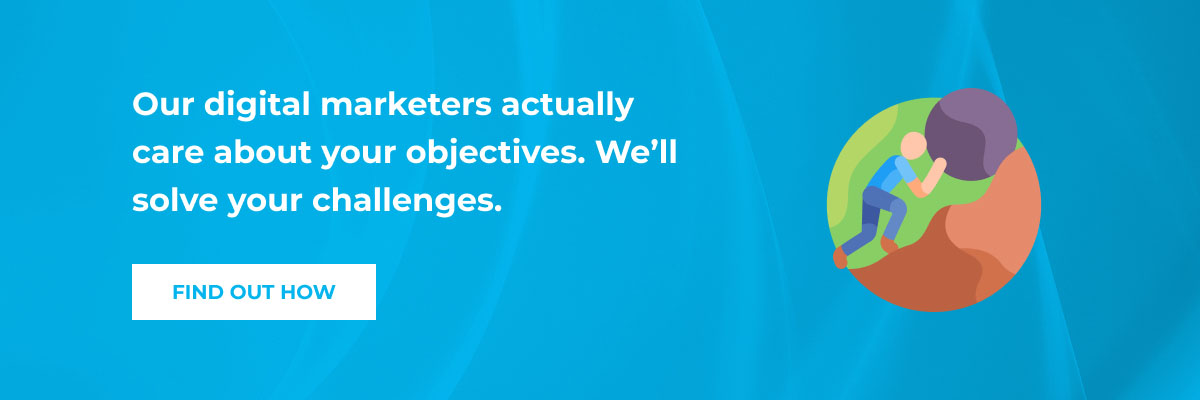
All right, so is inbound or outbound better? They’re both good, of course. That’s why we speak of the overarching concept, DM. However, the more UX friendly to proceed is to do inbound first, then proceed with outbound.
- Get prospects on a website with SEO, then retarget with ads.
- Promote a lead magnet with quality content, then do email marketing.
- Get contact information via pages that satisfy user intent, then have sales follow-up.
Targeting cold prospects with ads is also outbound marketing, as are most offline marketing techniques (billboards, TV ads, trade shows, radio ads, etc).
You can also go more in-depth if you have a web development team too. For example, if you’re an ecommerce platform with user accounts, you can target based on search history. Your inbound marketing brought people to the e-store.
Now, by looking at their analytics while being logged in, you can send them emails with promotional offers. Have they browsed a T-shirt again and again but still no conversion? Send them a 10% discount coupon; that’s your outbound marketing part right there.
Digital marketing works because it doesn’t limit itself. Do what gets results. Sometimes inbound will be better, sometimes outbound will be better. Most of the time, combining them is suggested.
B2B Digital Marketing vs. B2C Digital Marketing
DM gets results in both business-to-business and business-to-consumer. You just have to vary your approach. The target groups are vastly different, so you can’t expect to do the same things and be successful.
However, the plus side is that you can apply DM to all industries. Using case-by-case strategies and keeping in mind niche details, sure, but you can still do it!
The first step is building your buyer persona. Who is it that you want to reach? And more importantly, what do they have to gain from you? Even without reading further, you’ll see for yourself that the B2B vs. B2C differences become apparent fast.
B2B Digital Marketing

In B2B, you want leads to get to one of your sales experts. So, in order to guarantee worthwhile use of time, your leads have to be high quality. Targeting is more important. If you have to choose, it’s better to get fewer “warmer” leads, than more “colder” leads.
One especially good channel for B2B is LinkedIn. It is simpler to get directly to decision-makers and executives. However, the lines between digital marketing and cold outreach begin getting foggy in that case.
Any direct interaction with a potential lead should be handled by a salesperson normally. DM is more the set of techniques involved in drawing those prospects to your platforms.
Focus your attention on traditional pain points. Cost, efficiency, time-to-market, collaboration, communication, teamwork.
Those are prevalent subjects in the B2B world, and they’re also what your product or service should be improving. Similarly, reflect those priorities in your marketing channels. B2B professionals have limited time; divvy up long form and short form content appropriately.
Mix in tangible results, case studies and proven accomplishments between promises of quality and efficacy. You have to present your brand as complete experts in the field, but also expect that the marketing funnel will be longer.
- Decisions need approvals and agreements; the marketing funnel is longer.
- Networking and relationship-building play an important part in guaranteeing the sale.
- Facts, case studies, logic and experience are more important.
- Marketing materials should be easy to share (because of the multiple stakeholders).
B2C Digital Marketing
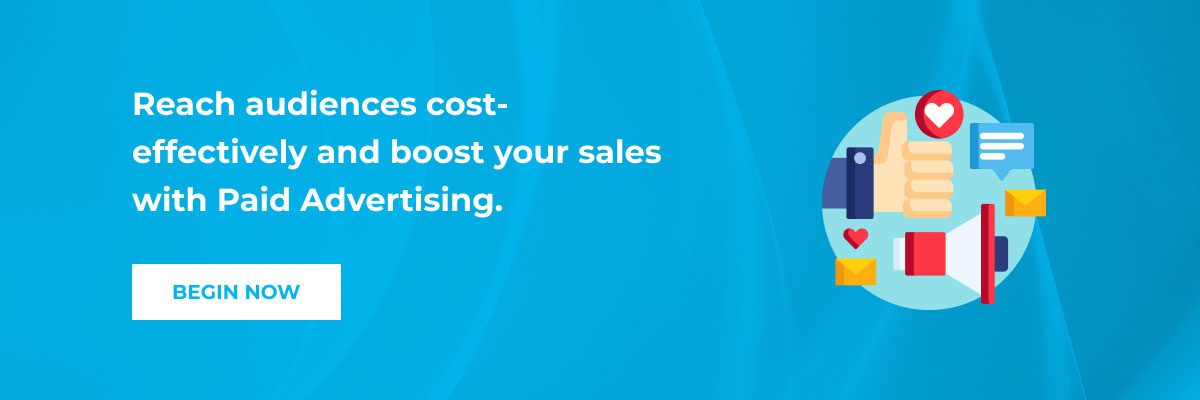
On the flipside, B2C digital marketing can operate in the absence of a sales team too. There are industries that do have sales (insurance, internet, phone plans, etc), but they function differently from B2B.
The accent is on immediate gain and emotion. With a more “popular” product, the end goal could be simply drawing in lots and lots of users, so that part of them are going to convert. When you’re tackling a niche market though, more precise targeting is recommended.
Similarly, CTAs have to be stronger. Because in many cases a B2C lead won’t go through sales or customer support, marketing has to convince them to buy by itself.
It’s common to place banners, offers or other marketing promotions higher up on pages, with promises daily-life improvement. More personal security, better health, easier mundane routines, increased prestige within a peer group, etc.
B2C digital marketing is the here and now. It’s the acceleration of purchase and the enablement of “something better”. That something better could mean a higher quality iterative product than the competition, or a complete innovation.
Innovation is actually one area that might mean you need a different approach. For example, B2C tech products are often sold on the premise of being “faster”. It’s a promise of fact, not emotion. In these cases, you also have to build your approach around specifications and performance.
- Decisions are taken fast. Short-term offers and promotions yield better results.
- B2C customers want to “feel good” about their purchase. It’s about emotion.
- Brand trust is more important, because customers often don’t interact with another person.
- You should create that feeling of a “personal” connection. Show your audience you understand their needs.
What is Digital Marketing? 9 Strategies
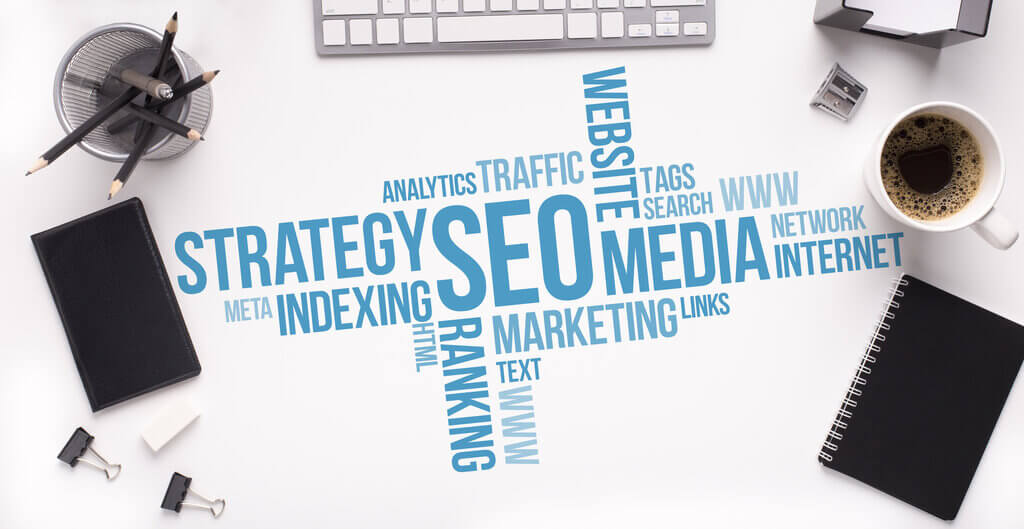
DM isn’t a homogenous practice. As we’ve explained above, it’s a cumulation of both inbound and outbound strategies. Various DM specialists use their know-how to deliver promotional messaging in one way or another across the internet.
What is similar between all methods though is the goal. Ads, SEO, social media, content, email; all of these digital marketing approaches want to create a positive customer journey.
From prospect, to lead, to repeat buyer, DM looks to make the connection between the person and the brand desirable and mutually beneficial.
In that way, real marketing experts are going to use a multi-channel approach to shape how people interact with their companies. The better they achieve this, the higher the likelihood that purchases or contracts go through.
We’ve already given examples of many types of digital marketing. In the following section, we’ll go more in-depth with popular ones and provide typical pros and cons.
Whenever you’re ready to bring your DM game to the next level, send us a message. We’ve helped elevate dozens of companies, and are looking forward to aiding you too.
1. Search Engine Optimization
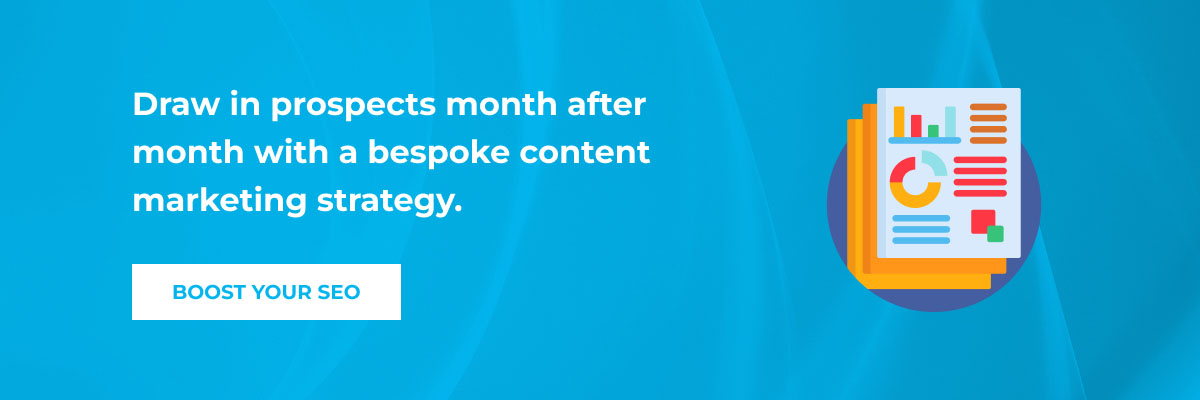
SEO is the practice of optimizing website pages for organic ranking. Each web page across the internet is regularly parsed by bots (algorithms). In the digital marketing field, we call them either “crawlers” (because they go in all nooks and crannies of a website), or “spiders” (because they build the “web”).
Depending on the information, content and the metadata that crawlers find on web pages, they will start recommending them to users (the indexing process). That’s how organic ranking starts.
However, not all web pages are made equal. Search Engine Optimization researches relevant, page-by-page keywords, which crawlers use to determine who that page should be served to. That’s the gist of it anyway.
Keywords also have to make sense as a whole though. A website with half of its keywords around sports cars and half of them around guitars will rank very badly. The signals literally get mixed, as spiders no longer understand what the purpose of the website is, or what you’re trying to do.
There are different types of SEO however. Not all of them will focus on strengthening pages for keywords. SEO specialists have more “tricks” in their playbooks about how to raise a domain’s score and authority.
Overall, you’re looking at activities such as:
- Informative and qualitative content built around user search intent.
- A backlink strategy to get your references (links) from websites with strong SEO authority.
- Increasing user engagement and generating more leads via keyword relevancy.
- In-depth analysis of a website’s technical performance and improvement suggestions.
On-page SEO

The name’s really on the nose. This is SEO for content that’s literally “on the page”. Basically, your keyword research, keyword density optimization, layout structures, schema markup, etc.
On-page SEO “maps” search terms to pages and determines their structure by looking at what’s already ranking in (mostly) Google Search. Competitive analysis is a key part of the process. The top 5 spots are definitely doing something well to be ranked so high in organic search.
A lot of those factors will relate to on-page SEO. You have to choose the right keywords and build the right layouts before anything else.
If 3 competitors have written around 3,000 words on a blog post, you won’t get far with just 1,000. Or, if the top 2 competitors have a Google Maps implementation on their service pages, that’s a strong indication that crawlers favor the approach.
Essentially, crawlers will form a template in their “minds” about how a page should. They do this based on the “best” websites in their databases.
On-page SEO examines how to come as close as possible to those expectations, while still retaining originality. That’s why SEO specialists are often paired up with content writers and copywriters.
Off-page SEO
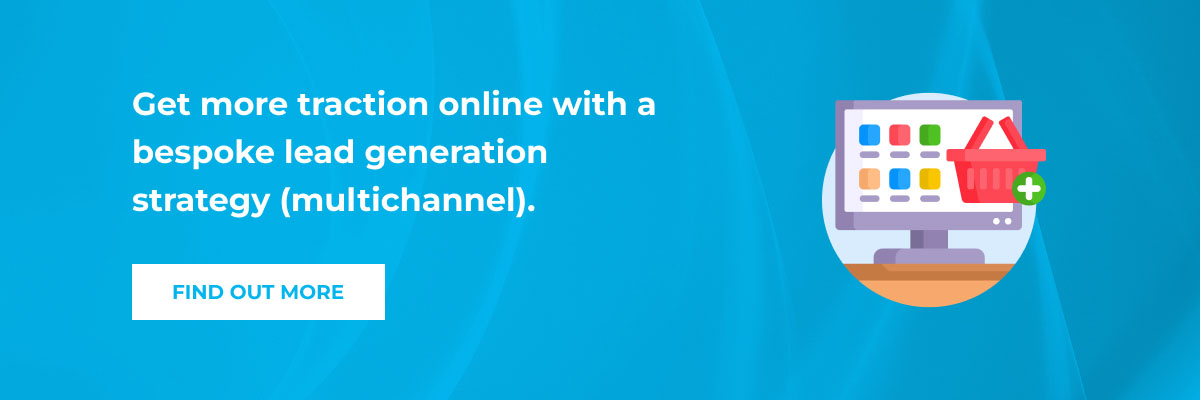
Again, the name is pretty much what it says. You take your efforts away from the website’s actual pages. This is where the concepts of link building and citation building come into play.
Instead of providing crawlers with keyword-rich content, you try to create valuable external references. In fact, this is one of the key driving factors behind successful websites.
What off-page SEO does is create a correlation between already powerful websites and yours (from an SEO perspective). The exact method differs between the 2 approaches though.
Link building is an outbound strategy. It involves considerable research of other brands which can relate in some way to your niche. They must not be your competitors though! You’re going to ask them to link to your site.
For example, if you’re selling toasters, you could get in touch with a reputable home appliances review platform. In one of their “top X toasters” posts, they would directly link to one of your products.
This serves 2 goals: you generate more attention to your brand, and you create that technical “backlink” which crawlers like to find. Both are why you must do your research on who you’re contacting first of all.
Usually, backlinks are either paid for, or inserted in guest posts (blog posts provided by you for free in exchange for linking to yourself in them).
Citation building involves listing your business on directories such as Hotfrog. Again, you increase visibility while also creating more references for SEO reasons. Make sure you keep your NAP (name, address, phone number) 100% consistent with your Google Maps profile!
Technical SEO

Beneath all the other layers of website SEO stands its pillar: the actual website. You could do proper on-page and off-page for months and not get good results. Well, eventually, you would still get traffic if your backlinks are powerful enough.
Still, backlinks should never substitute a well functioning website. This is where SEO brings up the concept of Core Web Vitals. Each target another side of UX. The 4 most important ones are:
- First Contentful Paint (FCP) – how fast is the first image or text painted.
- Largest Contentful Paint (LCP) – how fast does the biggest element on the page render.
- First Input Delay (FID) – how fast the website responds to user interactions
- Cumulative Layout Shift (CLS) – measures if elements still load on the page after it’s already interactive.*
*Note that features such as image lazy loading can cause this, but it’s still one of the recommended practices by Google. Just one of the many reasons why you should be collaborating with digital marketing experts.
What makes a website “good” differs between developers and SEO experts. Your platform could be functional, but lacking in image compression, CSS optimization, mobile responsiveness, etc.
Some speed fixes are easy (such as implementing an AMP solution), while others need more work. Cross-team collaboration is common between SEO specialists and web developers.
2. Paid Client Acquisition
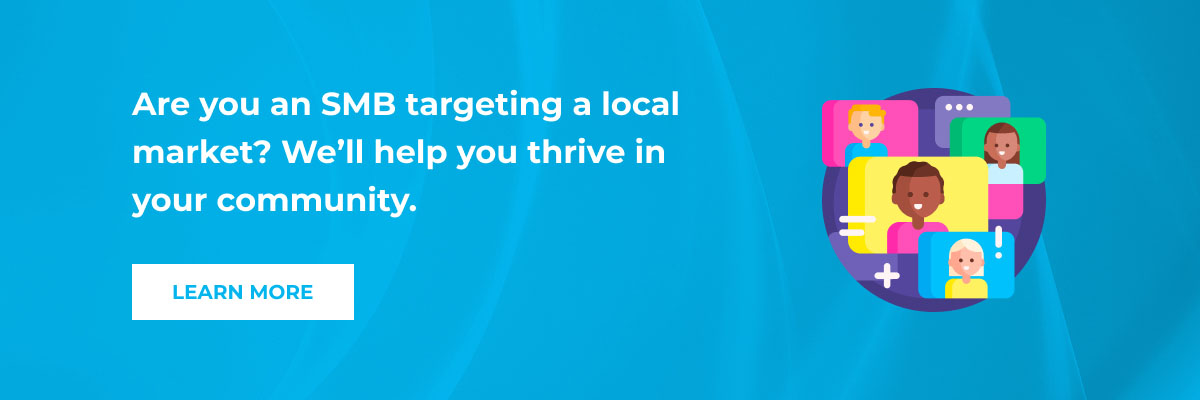
Often referred to as just PPC, paid client acquisition is a digital marketing strategy which revolves around online advertisements. The abbreviation PPC is popular because most people will opt for a “Pay-per-Click” model.
Each time someone clicks an ad, the creator of the ad is charged a certain sum. This sum depends on a few factors, however it’s not the only available payment model. Publishers (Google, Facebook, Twitter, LinkedIn, etc) also have the Cost per Mille/Cost per Thousand model.
CPM lets advertisers pay a set sum for each 1,000 users that see the ad. This is mostly useful for brand awareness campaigns, or if you have a high disposable budget at your disposal.
Even with a lot of optimization work put in, it’s likely that ads will be shown to a lot of people who are not going to click on them. However, they would still count towards your CPM cost.
In the case of Google Ads display ads, there’s also a special case. In the paid ads practice, we also have the term “CPA” (Cost-per-Acquisition). Normally, this is math that you’re doing on your own. Basically, you calculate how much it costs you to get 1 lead from paid ads.
But, only in the case of Google display ads, CPA can also be a payment model. Certain terms & conditions apply though.
We’re also referencing Google a lot because it’s the most popular search engine. So, if you want search ads or display ads, you should pick Google. Additional budget could be directed towards other search engines, such as Bing).
Google Ads
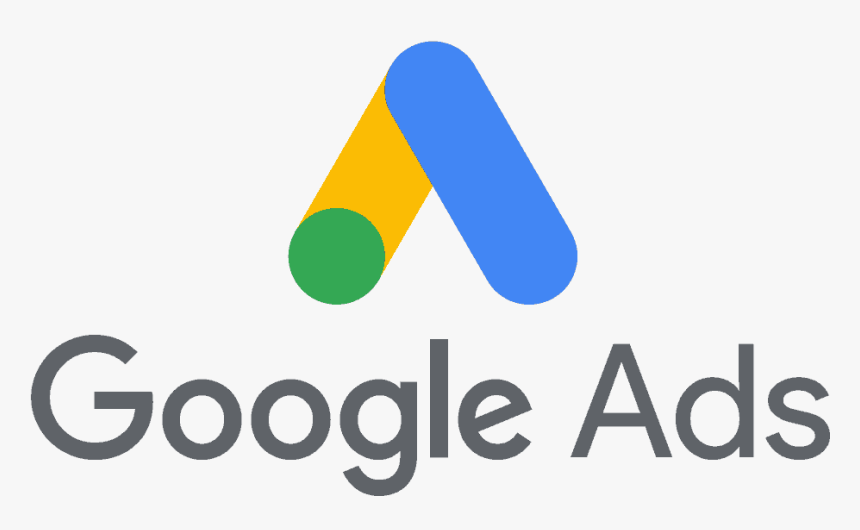
The Google Ads platform is a favorite among DM specialists and business both (SMBs and enterprises alike). To put it plainly, it just works.
There’s really going to be a case where Google Ads aren’t going to serve your needs. For example, you can bid on keywords used on Google Search queries and your ads will show up before any organic results.
We’re sure you’ve seen examples yourself many times (unless you’re only browsing on desktop with an active browser adblock plugin). They’re clearly listed as “ad”, and the advertiser who has a bigger budget and is doing better ad optimization will be the head of the list.
Search ads give you many customization options, depending on your needs. For example, you can:
- Add & customize up to 3 headlines (30 characters limit for each).
- Add & customize 2 descriptions (90 characters limit for each).
- Use a variety of extensions:
- General sales-y info which show up on all of your ads (ex: Free Returns)
- Sitelinks (links + text to specific pages)
- Phone numbers
- Discount codes
- Prices
- Product ratings
- Locations
- Etc
Especially if you’re doing B2C, you can also opt for display ads (image + CTA + link) too. Ecommerces will have a lot to gain here, because you can directly showcase products. Display ads will be shown across many Google Ads partner websites and within Gmail.
Lastly, there are video ads. This directly means YouTube, as Google also owns it. We’re sure you know what these are already so we won’t get into it much.
Just remember that not everything goes with video ads. There are guidelines you have to respect, and its particular Cost-per-View (CPV) model racks up costs quickly.
Facebook Ads
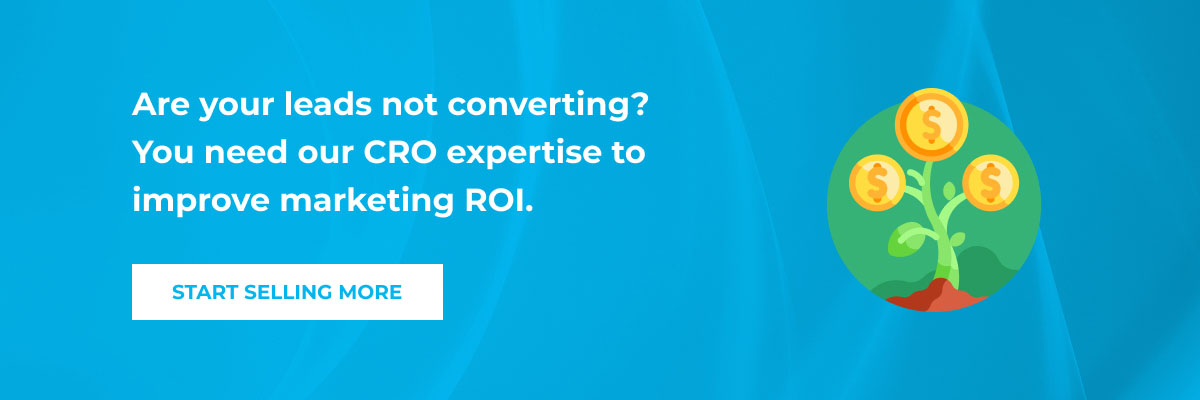
Unlike with Google, you’re not targeting keywords on Facebook. Instead, you will define an audience by its interests, age, location and gender. Demographics basically.
Try to be as specific as possible without narrowing your scope too much. On the right side of the platform, you’ll see that Facebook gives you estimations of expected ad reach.
This updates in real-time as you add or remove targeting criteria.
If you’re looking to add images or videos, there are certain requirements you must fulfill. For example, say you’re promoting women’s swimsuits. Since all initial checks are algorithmic, your account might get flagged for inappropriate content at first.
Getting in touch with Facebook can get the situation sorted, but wait times can often last quite a bit.
Other than that, we do recommend Facebook too in most cases because it gives you easy access to a wide audience. From there on out, it’s up to your copywriters, ads specialists and designers to create something convincing.
Remember to take advantage of all tools at your disposal. Long descriptions, short descriptions, ad headlines, CTAs, etc. You’re going to pay per 1,000 ad views or per click anyway, so you might as well profit from all available functions.
Another option is “sponsored posts”. Sponsored posts are regular posts which you’re paying to “boost” in popularity. They’ll be shown to a lot more people, creating valuable brand awareness.
Boosted posts can be an important part of the beginning of your marketing funnel.
Other Ads Platforms
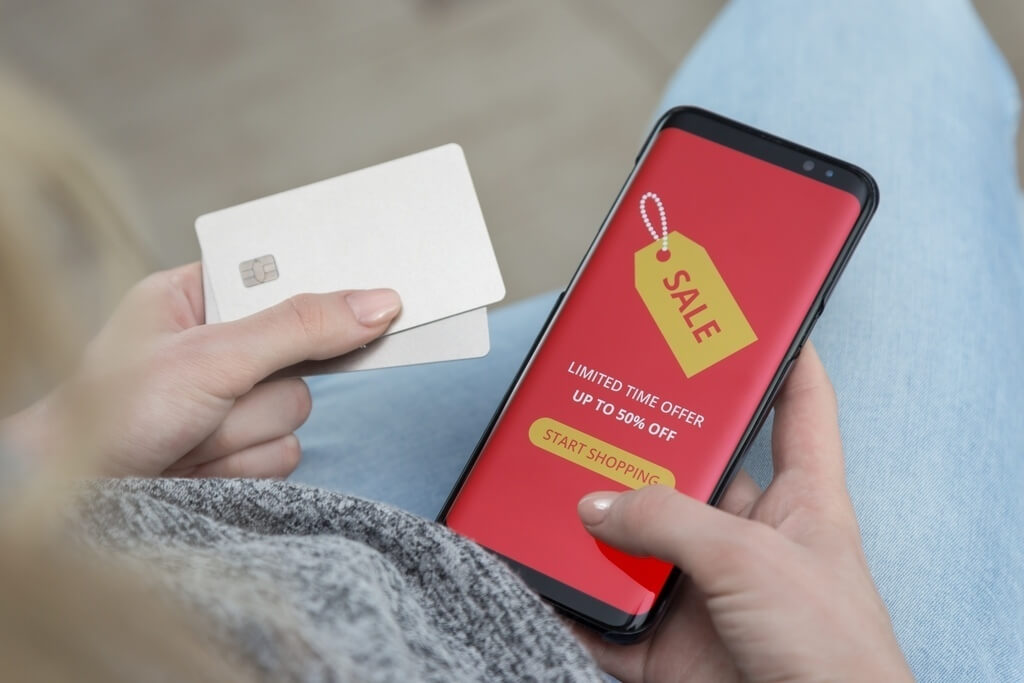
You will also see paid client acquisition offers from Twitter, LinkedIn, Pinterest, Bing, and more. For example, if your Google Search ads are performing particularly well, you could try out Bing too.
Or, if Facebook is bringing many conversions, you can try out Twitter audiences as well. At worst, you’ll waste a bit of money short-term. At best, you might’ve found another great channel that your audience is involved in.
Naturally, to make sure that you’re not flying blind, you should do your market research first. For example, promoting a B2C service on LinkedIn most likely isn’t going to work. At the same time, it could be a grand idea to give LinkedIn special importance when you’re doing DM for B2B.
Remember Your Landing Pages
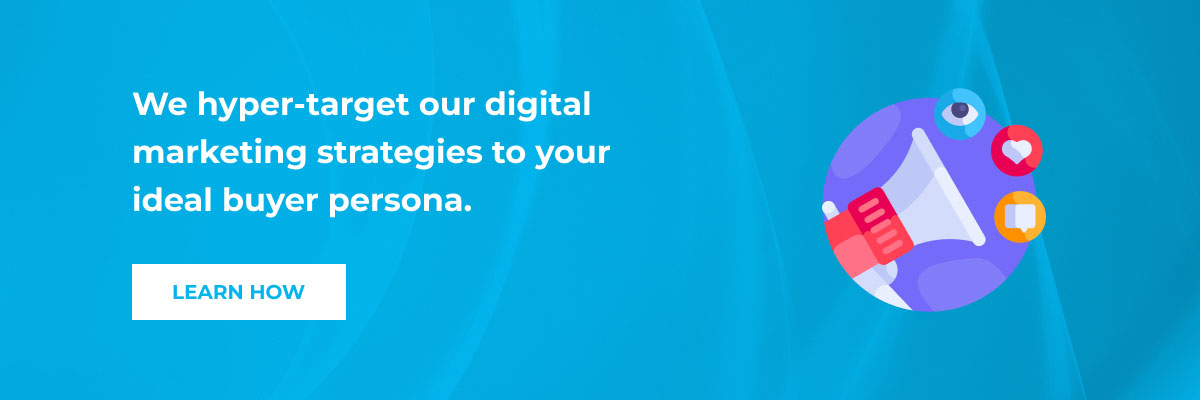
This is one step you can’t allow yourself to forget. You know that saying that’s “it’s about the journey, not the destination”? That’s just wrong on all levels in digital marketing. Both must be flawless.
Let’s say that your actual ads are phenomenal. They’re convincing, action-driven, they generate emotion and brand trust. And then, leads end up on a page which loads up in 5 seconds and looks like a 2005 personal blog.
We’re sure you see where we’re going with this. Landing pages must be responsive, short, well-designed and to the point. Give your new leads exactly what you’ve promised in the ad.
Are you selling gardening services? Place a quote request as the very first element on your landing page. Only then do you proceed with copy that gives arguments for leads to work with you.
Similarly, don’t drag on; it is pointless, inefficient, and won’t generate revenue. What you’re reading now is by default long-form content. It’s a blog post. It’s supposed to be long(er) because it serves an informational search intent.
Ads landing pages serve transactional search intents. Those people have clearly shown a purchase interest through their action (interacting with the ad).
Use bullet points, clever design elements and other page formatting to get to the point ASAP. Introduce CTAs regularly between the 2-3 sections you’ll have.
3. Search Engine Marketing

This is more of an honorary mention for clarification purposes. Search Engine Marketing (SEM) is a sub-group of digital marketing all about promoting websites through paid advertising.
However, SEM can also include SEO practices at times. In that way, both SEO and PPC are blended together as lead generation tools. It could be a more direct “collaboration”, such as having dedicated experts performing both aspects independently site-wide.
Or, it could refer to specific pages. Normally, landing pages will have a “noindex” directive in their robots.txt. This prevents crawlers from putting those pages in SERPS and “indexing” their content.
You’d want to do this because many landing pages often recycle website content. Duplicate content is not good for your website’s overall SEO. However, in some cases, you’ll want to have the PPC landing page also be an organic traffic generator.
So, you combined PPC and SEO together, forming SEM. In that way, practically speaking, SEM isn’t anything by itself.
4. Social Media Marketing
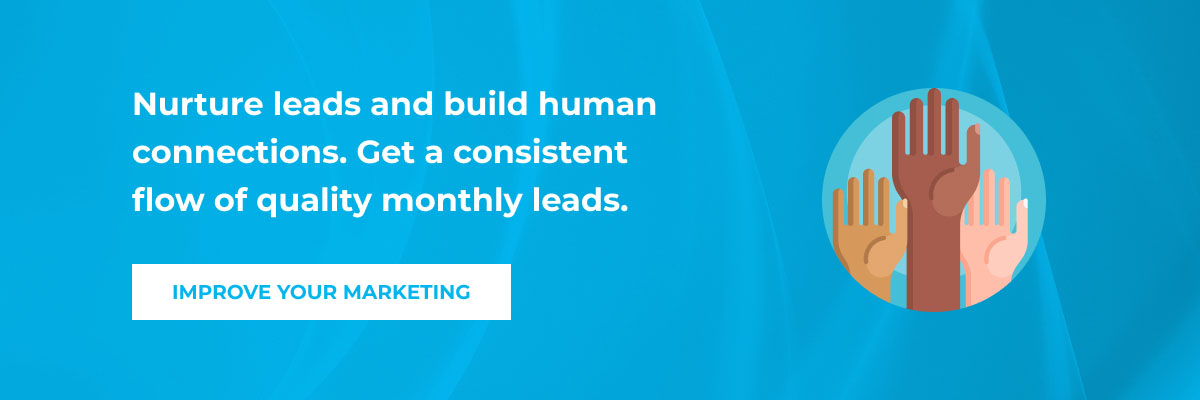
Social Media Marketing is more than just publishing the occasional post every now and then. Above all, social media is about engagement. Driving traffic and building your brand’s image by gathering an audience around you. The popular channels include:
- YouTube
- Snapchat
One of the main reasons for which it’s often picked by digital marketers is its potential in the B2C market. Creating and sharing content on social media is one great method of getting more traction towards your website.
Some businesses’ entire YouTube channels are dedicated towards promoting education and information in their niche. Throughout the videos, they will plug and direct prospects to their platform. Moreover, social media is becoming a bigger part of the B2B field as well.
Combine that with the available engagement tracking methods, and you can quickly triage what’s valuable for you. Some interactions can mean more or less for your business depending on what you’re doing.
When still in the brand awareness phase, gathering only likes will go a long way to help you grow. Don the road though, you’ll probably become more interested in comments, clicks, and shares.
Furthermore, social media is a wonderful medium for both impulse buys and more significant investments. You could market shirts, watches, computer parts, insurances, cleaning services, and whatever else crosses your mind. What would differ are the tonality and the approach.
A main factor is of course the age of your target group. Social media is built for constructing and sharing messages, and age groups react better to different types of messages. Younger target groups will probably be impressed if influencers give you a shoutout, while older generations probably won’t care at all.
What’s great is that you can always test and see what works better.
5. Content Marketing
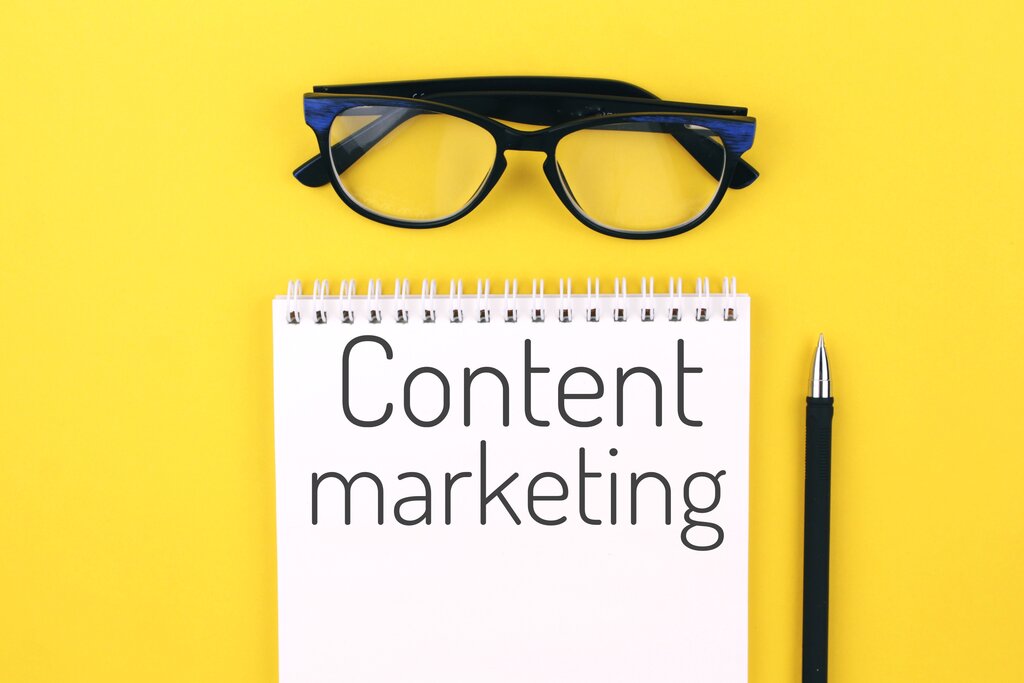
Content is any media independent for the use of a particular audience. In the digital marketing industry, we use the term for assets which create brand awareness and drive lead generation.
As such, content can be:
- Blog posts – Draws organic traffic from informational searches. Blog posts establish your brand as experts in the field. They act as both the first and prolonged points of contact between prospects/leads and your business. Blog posts convince and convert by providing free & relevant information, accompanied by CTAs.
Does that sound like something you’d want in your DM strategy? Get in touch today for a custom content marketing plan. - Audio-video content – Videos are incredibly popular on the internet. We can give you reasons, but do you even need any at this point? Videos get your point across faster and better almost 100% of the time. Videos also make it easier to use visual aids effectively. However, outside of platforms such as YouTube, video content will not rank on its own.
- Infographics – A great way to bridge the gap between written and video content. Infographics allow prospects to visualize everything you’re trying to get across in an approachable manner.
- Guides, ebooks, etc – Each content has a recommended minimum and maximum length depending on the SEO specifications of the keyword. You can provide users even more information however by promoting an ebook download. That CTA would involve users inputting their email address, and just like that you get another lead.
The “Secret Trick”
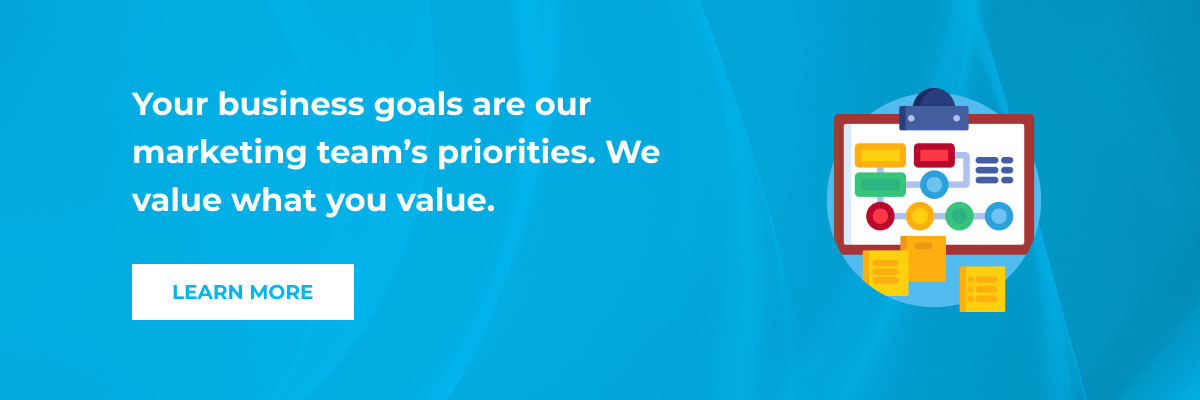
Content sounds great, right? Yep, we agree! But the thing is, content can’t be just information. In fact, content and SEO are very tightly knit together. Some experts in the digital marketing field consider that content is an innate part of SEO.
After all, both are mainly inbound lead generation techniques.
Any piece of valuable content is going to start with a keyword (or at least topic) research. This will determine how many times per month a specific query is searched for. In turn, this shows that you should have a web page ranking for those keywords too.
By targeting your audience this way, you’ll provide relevant, optimized and desirable content.
Granted, you might eventually build up content marketing traction by just winging it, but why even try? SEO-content marketing is a well-documented practice that leverages keyword research and density optimization, SEO briefs, blog posts structures and structured data markup.
It’s built from the ground up to be a collaboration between SEO specialists and content writers. In some cases, content writers will already have the required knowledge to do the entire process themselves.
Remember not to see it completely algorithmically though. Google also highly appreciates (and looks for) “natural language” in long-form content. SEO “tricks” were figured out by experts down the line.
Google only reinforces the ideas of serving user intent and providing content that would be truly enjoyable and informative to read. SEO content writing is a mix between the technical side and the human side.
6. Affiliate Marketing

This is not going to be the go-to method for most people researching digital marketing. Affiliate marketing is for after you already have a foothold in the market. Essentially, you’re paying an external collaborator a fixed % of your sales.
In exchange, they are going to perform a certain service for you. In lots of cases, this means reviews. Independent bloggers, YouTube creators, social media influencers, etc.
For example, if you’re selling a beard trimmer, you could reach out to someone that has one of the professions above. They’d provide you either an independent review, or group your product together with others.
When signing the deal, you could request a specific format that the review should respect (e.g: maybe you want only a video review). Similarly, you can provide key points that the reviewer has to cover, such as the beard trimmer being chargeable via USB.
The more details that your affiliate goes in, the better. It’s best if they provide their personal experience with the product, such as if the trimmer pulled any hairs (for example).
You might not be ecstatic to have some negatives said about your product, but let’s be real here. If a true downside realistically exists, then your future customers will figure it out anyway.
It’s better to advocate transparency from the get-go and accept your affiliate’s critique. It shows that your brand is willing to be open to improvements and feedback. And that means you’re trustworthy.
This can sound a lot like influencer marketing. But actually, influencer marketing is the new kid on the block in this genre. Affiliate blogs have existed for a lot longer, and there are still many run by SEO content writers.
7. Email Marketing

First of all, remember this important distinction: email marketing is not email outreach or cold email!
Email outreach is a sales practice where professionals reach out to “cold leads” with the ambition of turning them into valuable leads. This entire process and nurturing steps are not marketing. Instead, it’s the eponymous method that you’re after.
Email marketing is one in which you can stay in touch with your leads. For indeed, only leads will be part of your email marketing lists, as they subscribe to it themselves.
Because of that, this audience will receive promotional material from you with their consent. Sounds great, right?
And indeed, it is! You could further plug your content, or discount coupons, or special offers, or events, or really whatever you want. However, remember this: the emails must be valuable for the customer too, not just you.
You want to sell something, and your leads are aware of that, but it’s not why they subscribed to your emails. Most likely, they’ve shared their email address to receive content from which they can learn something. Well, at least if you’re selling a service.
There’s a difference between product-centric and service-centric businesses when doing email marketing:
- If you’re selling a service or a single product category – start with a welcome email; continue with informational emails and promote more knowledge & content; finally, send transactional emails (ideally with a discount opportunity).
- In case you’re selling multiple types of products:
- If users can select categories of interest – repeat the process above
- If the user can’t select categories of interest – send a welcome email, and then send only notifications about sales to wishlisted products or about incomplete checkouts for products in their cart.
Email Customization
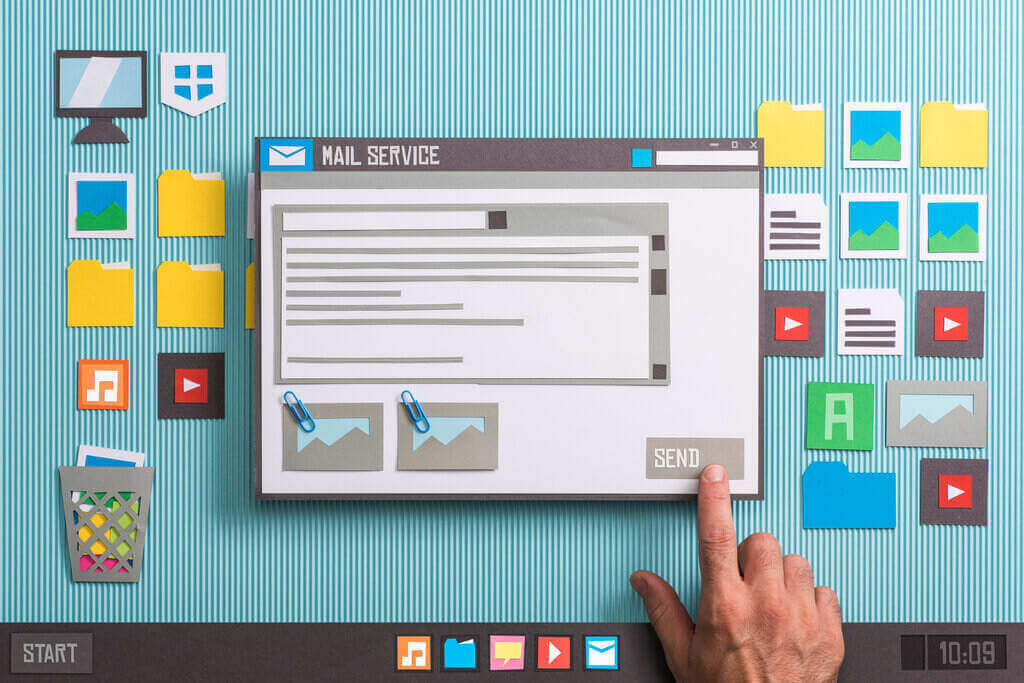
Most people will want to see at least a bit of effort from brands to connect with them. A little customization can go a long way. For example, in your email subscription form/settings, you should always include a field for their name.
That way, using email automation tools like Sendgrid or Mailchimp, you can use dynamic functions that let you automatically fill in details in templates.
For example, you could have something such as “Hi {customer_first_name}” turn into “Hi Mark”, or whatever that lead’s name is. Furthermore, automation tools allow you to control the flow and chain of emails. You can define which user actions should trigger the next email in the series.
Thanks to these options, you can keep your approach personalized, while also serving the lead only what they’re most likely to be interested in.
- A great email marketing strategy consists of both informative and promotional emails.
- The subject line and the body content have some form of personalization.
- Only relevant emails are sent to the lead thanks to automation and filters.
- Email marketing should regularly promote special offers, discounts, or loyalty programs.
- Email marketing is a wonderful lead nurturing tool because people actively subscribe to your newsletters.
8. Native Advertising

Native advertising is what some people call “hidden marketing” these days. However, in order to be compliant with most local laws, explicit disclaimers have to be in place. Native ads can also seem to overlap with affiliate marketing and influencer marketing, but they’re not the same.
Sure, these types of ads are made to blend in with the content they’re part of, but they eventually become obvious. Think of a YouTube cooking video where the creator eventually mentions that their pan was provided by X company.
Native advertising appeared in an effort to combat the cynicism and negative feelings that users tend to have towards ads nowadays.
They don’t disrupt the experience of users like commercials, or annoy with irrelevancy. Instead, they’re a more natural part of the medium which the consumer is naturally interested in.
For example, an article about beginning your start-up could be sponsored by a content management system used for creating websites. This reduces that inherent bias that people have against marketing.
Part of the reason is because native ads appear later on in blog articles, videos, reviews, etc, after the user has already been served what they were searching for. Additionally, they should never be concealed either.
Native advertising is not product placement! The thing being promoted is clearly labeled as being part of a sponsorization. By the time the user realizes the content also has advertising, they might have already been almost done with it.
Native ads are less intrusive and in your face, so this channel can definitely be worth investing time and money into.
9. Online PR

In many ways like regular PR, this channel is all about creating a positive relationship with your audience through direct interaction. Because of that, online PR is a natural part of other types of digital marketing.
For example, a content marketing strategy is its own DM channel. However, if you also have a comment section for your articles and respond to users, that’s online PR.
Additionally, PR is defined by any conscious action where a business representative is looking to boost the company’s image. Online interviews are PR, just as answering to reviews on your Google Maps page is PR.
PR is a powerful humanization tool. You turn your brand from just another business, to an entity that looks to connect with and understand its audience. Remember that especially in B2C marketing, emotion has a lot of weight.
Leads could turn away from your products (even if they’re quality) just because they don’t see you involved in the audience. No Q&As, no comment replies, no business roadmaps, etcs.
Nowadays, you must see your leads as more than just potential consumers. They’re an extrinsic part of your business, and their nurturing should be a priority. Otherwise, your competition is going to do it.
You’ll still get a bad image at times, don’t get any wrong impressions about that. However, PR tactics will let you overcome and maybe even turn those situations in your favor.
5 Digital Marketing Roles

A digital marketer is a specialist in lead generation and creating brand awareness. They could use organic channels, paid channels, or both. DM specialists guide themselves by specific KPIs, which they set together with business managers and operations staff.
However, note that different DM teams are going to track different KPIs. Digital marketing is there to generate leads, not sales! Remember that. Not even the best marketer in the world has the knowledge to 100% “force” a lead to buy from you.
In marketing, a conversion isn’t always a sale. It could be the submission of a contact form, or subscribing to an emailing list. You should combine DM with CRO to boost purchase chances.
So, what should you keep in mind when hiring DM experts? Well, it’s a tricky process. The best idea is to let us handle your digital marketing. We’re a full-service agency with 8+ years of experience in DM.
However, if you’d rather keep it in-house, here’s what you should know about 5 common roles:
SEO Specialists

Website search engine optimization is all about getting your pages to rank higher in SERPS. That being said, skilled SEO specialists understand that not all traffic is made equal. What matters most is the quality of that traffic.
If they’d have to pick between more users overall or fewer but more relevant, the second option will always triumph.
SEO specialists also work in tandem with developers in order to guarantee that the technical specifications of a website are up to par with modern standards.
In consequence, an SEO expert will track their success based one:
- Overall organic traffic.
- Time on page.
- Conversion rate.
- Page speed scores.
PPC Specialists

Paid ads experts run your online campaigns. Their work revolves around optimizing targeting, choosing the right keywords, reducing ad expenditure and minimizing the bid per click or per mille.
PPC specialists are the ones who will bring you short term results. Their top KPIs include:
- Ad clicks or impressions.
- Conversion rate on landing pages.
- Minimizing overall costs (CPC, CPM, CPA, etc).
Content Marketers

These are your digital marketing content creators. Usually, their main responsibility is writing blog posts. Mid-level or senior content writers will also create content calendars, do their own keyword research and SEO optimization, post articles, and even create schema markup.
Content writers could collaborate with SEO specialists and designers to perform their duties better. As their written content is long-form, it always helps to break it up with visuals.
Content writers educate, share information, and prepare sales long-term by nurturing audiences.
Their KPIs are:
- Organic traffic on blog posts.
- Time on page.
- Conversion rate (contact form submissions, ebook downloads, newsletters subscriptions and other associated actions).
- Number of followers or subscribers over time (for video content or email marketing).
Copywriters

Whenever you need service pages, product pages, homepages or other transactional pages, you should work with a copywriter. They’re experts at driving sales and other conversions by presenting convincing arguments in written short-form.
Copywriters know how to take advantage of emotion and weave it into their materials. They use that to sell what your business is offering. However, cold leads could still be troublesome.
Copywriters perform best when the groundwork has already been laid. When their pages receive warmer leads who just need that additional firm push from the back.
A copywriter is a task-oriented professional who can take bits and pieces of information and tie them in a laser-focused approach that respects selling principles.
Their KPIs are:
- Time on page.
- Conversion rate.
Social Media Specialists

No matter their networks of choice, social media experts look to create posts schedules and grow audiences. They work with both written and visual content, oftentimes planning strategies that include both.
Moreover, a social media specialist will also engage your audience through comments, creating valuable online PR. Choose these people well, because they’ll be the “face” of your business for many potential leads.
A true expert in this field will understand the value of both transactional and informational posts. Not all of them will be gifted writers, but they could be invaluable strategists. This is why it isn’t uncommon for them to work closely with content writers and/or copywriters.
Their KPIs are:
- Number of follows over time.
- Likes over time.
- Amount of shares over time.
- User engagement and retention.
- Overall audience size over time.
Digital Marketing Steps

We know this can be a bit overwhelming, so let’s break down the process into a few phases.
- Create short-term and long-term goals.
You should only make a strategy after you know what you’re trying to accomplish. What are your goals, and how important is each one? If you just want more prospects to find out about you, then maybe a Facebook Ads awareness campaign is the way to go.
Looking to build authority for your website for the long-term? Invest in SEO. So on and so forth.
- Define your target group.
Different people can be reached in different ways. If you’re selling tractors, you wouldn’t be advertising them on Instagram. The only way to truly take advantage of a marketing channel is by researching your audience’s trends and behaviors.
Do you have multiple audiences? Use multiple digital marketing tactics and channels. Get the right message in front of the right prospects.
- Set a budget aside.
Sometimes, you have to spend money in order to make money. On-page SEO and organic social media might be free, but off-page SEO and PPC can incur unexpected costs.
That doesn’t mean you should limit yourself to inbound lead generation though. It all piggybacks to the previous point. Where are your potential leads located? How can you draw them in? If you have to spend money first, then do it if your ROI potential looks good.
- Do your keyword research.
This is the driving factor of digital marketing. SEO, PPC, social media, native ads, etc; they all come back to keywords in the end. Maybe they’ll be “tags” or “interests” in parts, but they’re keywords all the same.
Carefully determine what you want to be known for. What idea prospects should immediately associate with your brand. Furthermore, by being consistent in branding from the start, you’ll have an easier time to grow (both from a technical and UX standpoint).
- Use responsive designs
For everything. Website visuals, ads, videos, the works.
Mobile device usage has gone through the roof fast in less than 10 years. Some niches will still be reserved for more desktop-based browsing, but it’s unlikely that you’re in them.
Besides, there’s a good chance that prospects are still initially finding you on mobile, then taking the research to desktop. Furthermore, indexing of websites is being done mobile-first now.
If your speed score and mobile UX aren’t up to par, you’re not going to rank. Remember that many prospects will be browsing via mobile data too, not just Wi-Fi. Your ads and pages still have to display fast. Images can’t just cut off or be automatically resized to hideous aspect ratios.
- Be open to improve
As we’ve already said, digital marketing gives you easy access to analytics. Both short-term and long-term. Use that data to your information. Piece together bits and pieces and create valuable information which will determine if you’re doing the right things.
And if you’re not? Change course! DM is flexible, dynamic, ever-changing. Don’t be afraid to try new strategies. Actually, any DM expert will tell you that testing is a huge part of it.
Redefine Your Company’s DM

Digital marketing is the way of the future. It does everything that traditional marketing is lauded for, but much better. DM excels at getting the right message in front of the right prospects, at the right time.
Thanks to many DM online tools and practices, you can completely control how you want to promote yourself, and what audience(s) should find you.
Our recommendation is choosing a multichannel digital marketing strategy which is going to propel your business to new heights. We eliminate stagnation and empower innovation.
Do you want to help your organization evolve? Simply get in touch with us and let’s talk about how we’ll help.